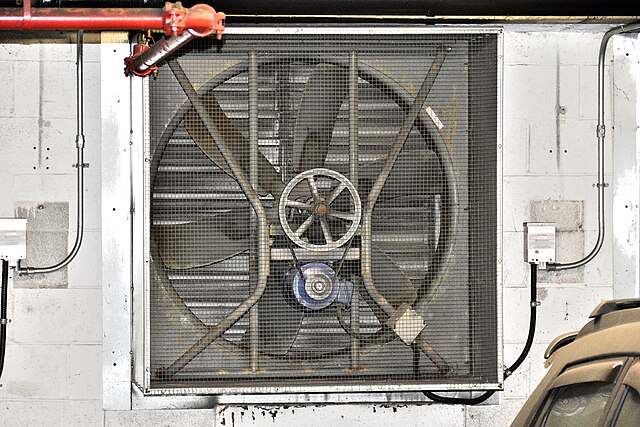A chimney is an architectural ventilation structure made of masonry, clay or metal that isolates hot toxic exhaust gases or smoke produced by a boiler, stove, furnace, incinerator, or fireplace from human living areas. Chimneys are typically vertical, or as near as possible to vertical, to ensure that the gases flow smoothly, drawing air into the combustion in what is known as the stack, or chimney effect. The space inside a chimney is called the flue. Chimneys are adjacent to large industrial refineries, fossil fuel combustion facilities or part of buildings, steam locomotives and ships.
A smoke hood in the Netherlands
Chimney pots in London, seen from the tower of Westminster Cathedral
A seagull sits on top of a hot gas cooling chimney at The World of Glass in St. Helens in the United Kingdom
A chimney with two clay-tile flue liners
Ventilation (architecture)
Ventilation is the intentional introduction of outdoor air into a space. Ventilation is mainly used to control indoor air quality by diluting and displacing indoor pollutants; it can also be used to control indoor temperature, humidity, and air motion to benefit thermal comfort, satisfaction with other aspects of the indoor environment, or other objectives.
An ab anbar (water reservoir) with double domes and windcatchers (openings near the top of the towers) in the central desert city of Naeen, Iran. Windcatchers are a form of natural ventilation.
An axial belt-drive exhaust fan serving an underground car park. This exhaust fan's operation is interlocked with the concentration of contaminants emitted by internal combustion engines.
The Central Tower of the Palace of Westminster. This octagonal spire was for ventilation purposes, in the more complex system imposed by Reid on Barry, in which it was to draw air out of the Palace. The design was for the aesthetic disguise of its function.







